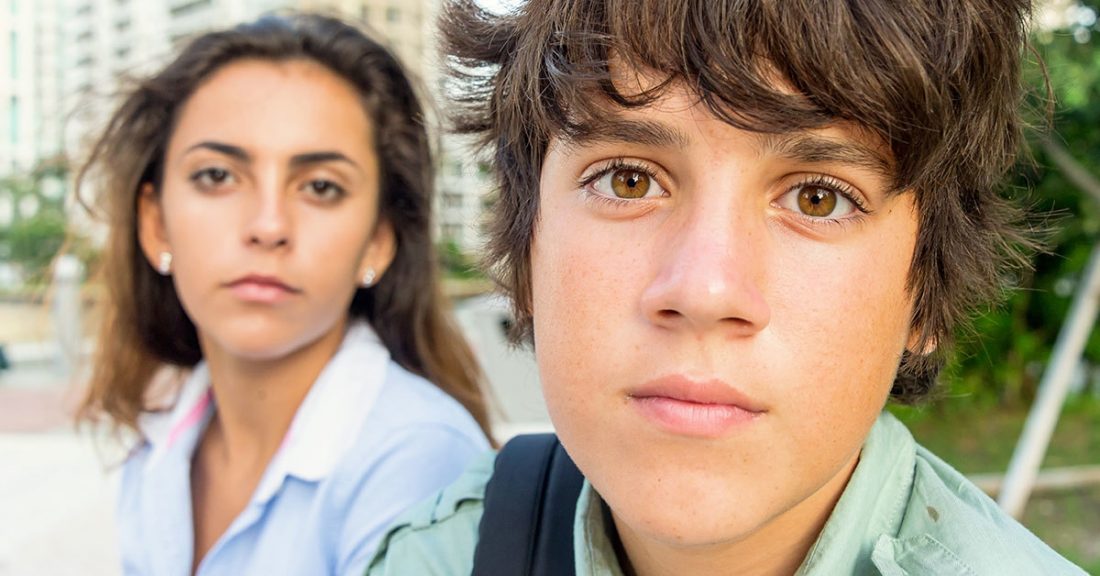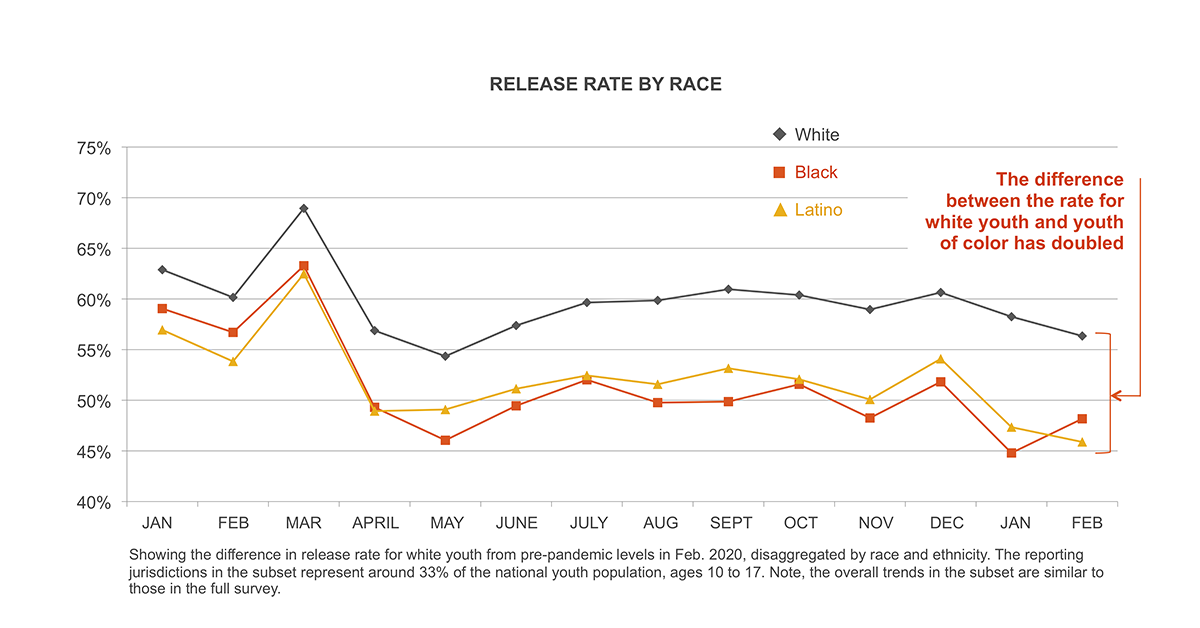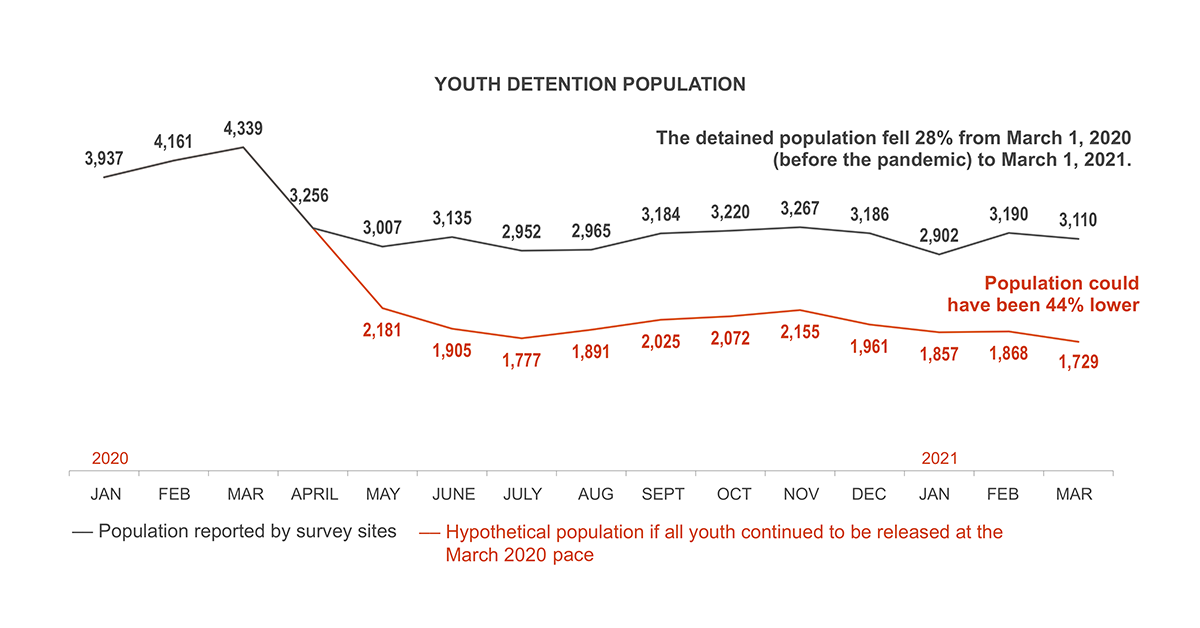As Pandemic Eases, Youth Detention Population Creeps Up

A monthly survey by the Annie E. Casey Foundation of youth justice agencies finds that since last May, the use of juvenile detention is down for white youth, but up for their Black and Latino peers. Black and Latino youth account for an increasing share of the detained population because agencies are slower to release them from detention than white youth, according to data through March 1, 2021.
While the detention population overall fell by about 28% from March 2020 to March 2021 — due to a dramatic drop in admissions to detention since the first months of the pandemic, the pace of releases continues to lag behind pre-pandemic levels. As a result, the population is creeping back up, leaving many young people — disproportionately Black and Latino — confined with limited in-person connection to their families, and potentially vulnerable to the virus. In the first two months of 2021 alone, 200 more youths were held in detention than at the end of 2020 — an increase of 7%.
“Month after month, juvenile justice systems are failing to show enough urgency in getting kids out of detention — especially youth of color who, as a group, are getting stuck in detention,” says Nate Balis, director of the Foundation’s Juvenile Justice Strategy Group.
Pace of Releases Slower for Youth of Color
Black and Latino youth languished in detention for longer than their white peers even before the onset of the pandemic — but the disparities have gotten worse as the pandemic has endured. This data point alone — the disparities in release rate by race and ethnicity — accounts for all of the increase in the Black and Latino share of the detained population over the past year. By the numbers, in January and February of 2020, the release rate for Black youth was 4% lower — and the rate for Latino youth was 6% lower — than for white youth. But over the course of the pandemic, the size of those gaps has roughly doubled, to 11% for both Black and Latino youth.
Population Disparities Remain for Youth of Color
Results from March 1, 2021 show that the number of Black and Latino youth in detention remained higher than in the Spring of 2020, while the number of white youths in detention had declined. This divergence by race and ethnicity is due solely to the lower release rate for Black and Latino youth.
When the pandemic began in March 2020, juvenile justice systems were quick to release youth from detention facilities due to public health concerns. Release rates spiked for youth of all races and ethnicities. But releases have slowed dramatically every month since then. Overall, the pace of releases in the first two months of 2021 was about 16% slower than the same period in 2020, just before the pandemic. If juvenile justice agencies had maintained the release rate from last March, 44% fewer youth would be locked up as of March 1, 2021.
About the Survey
The March 1, 2021 report captures trends from 143 jurisdictions across 34 states, representing 35% of the nation’s youth population (ages 10 to 17). For trends by race, the analysis represents information from 139 jurisdictions across 33 states, which contain 33% of the nation’s 10- to 17-year-olds.
Read more about how the survey is conducted and see previous data releases








